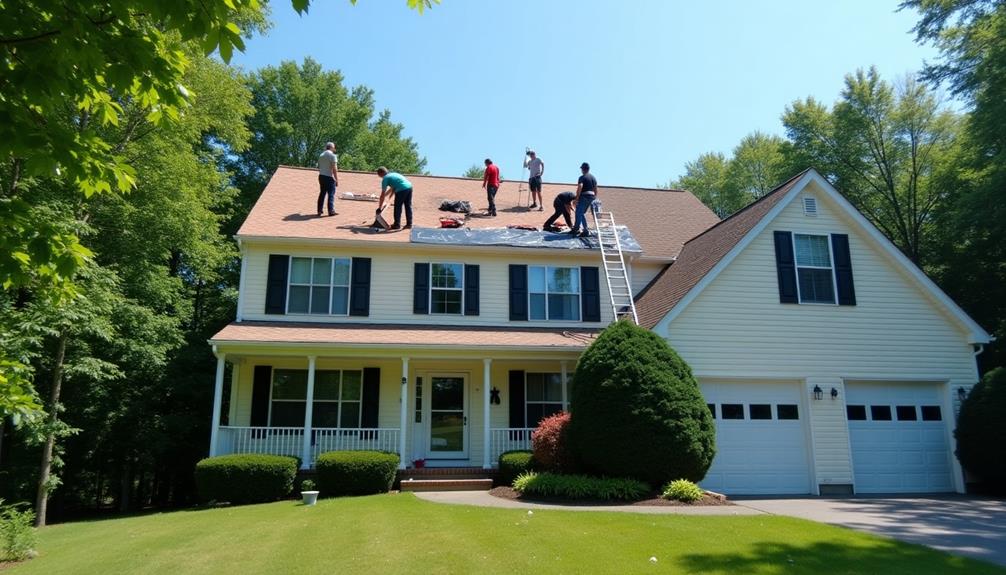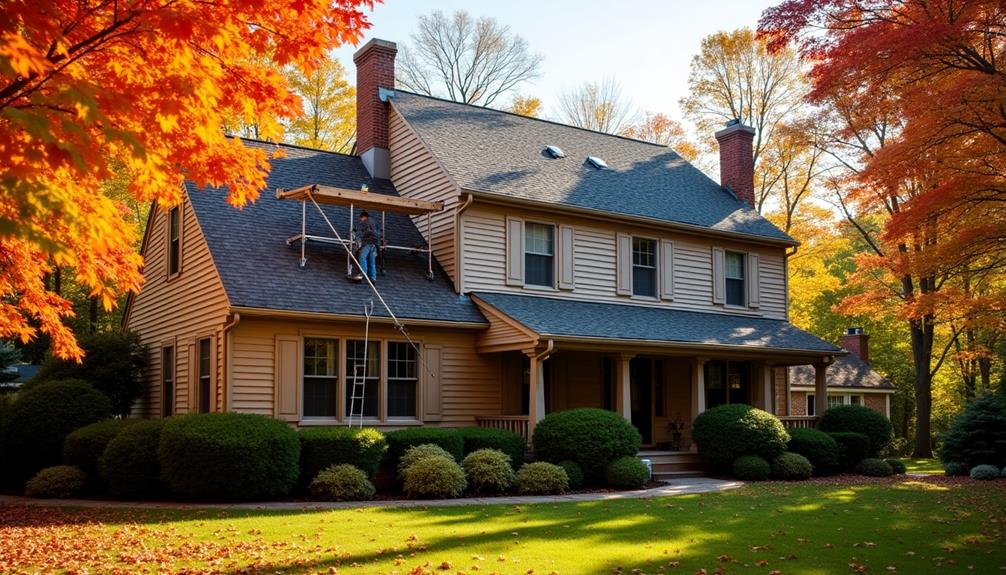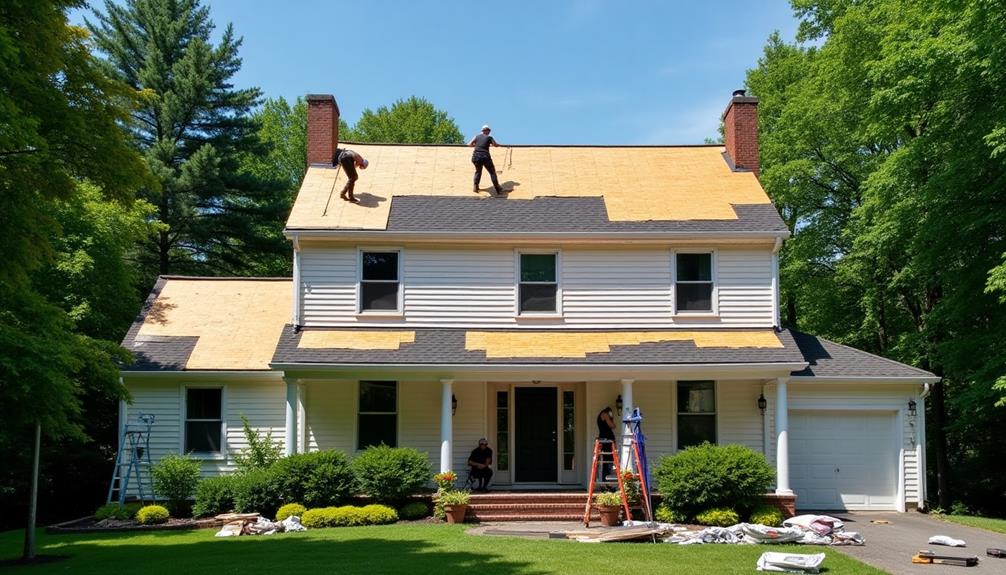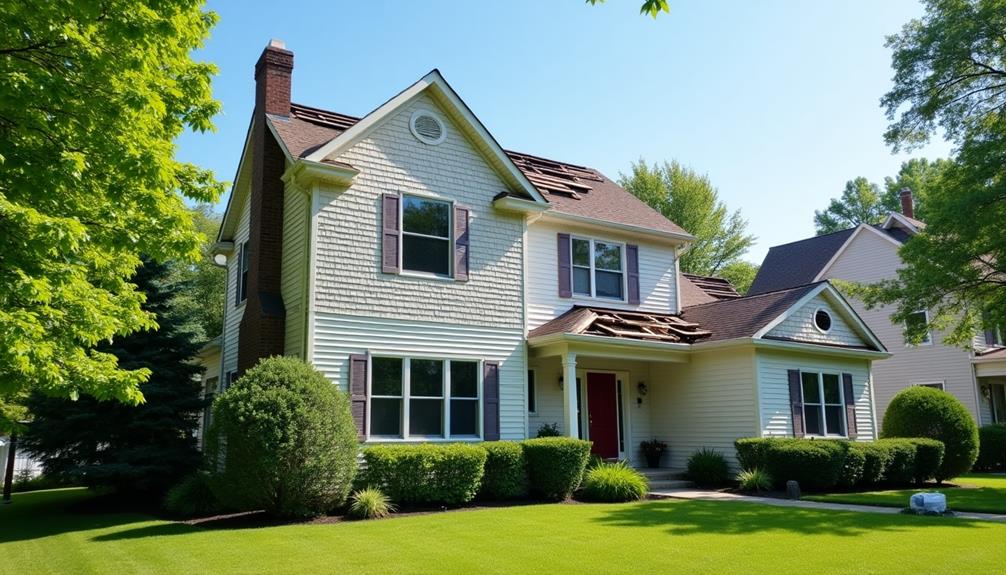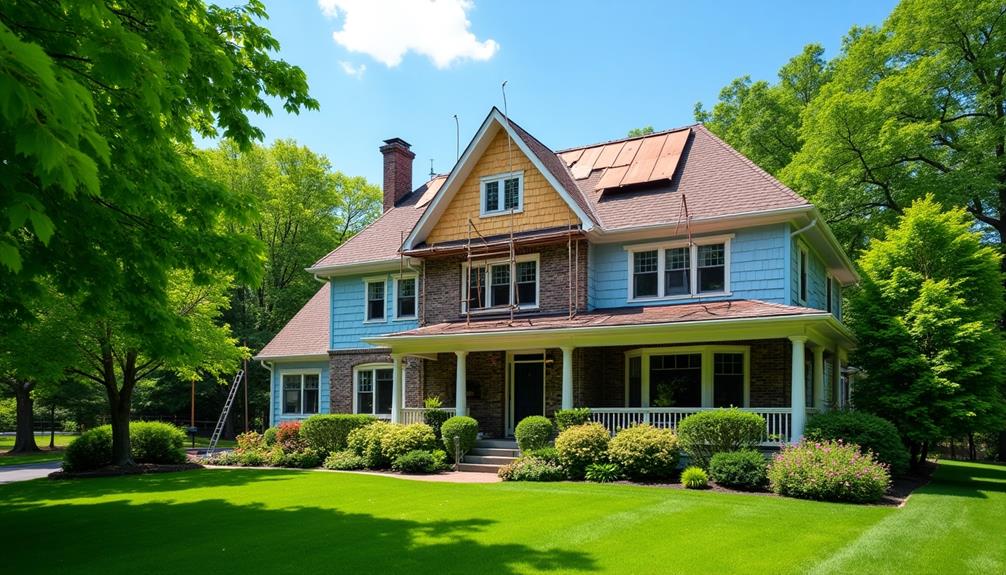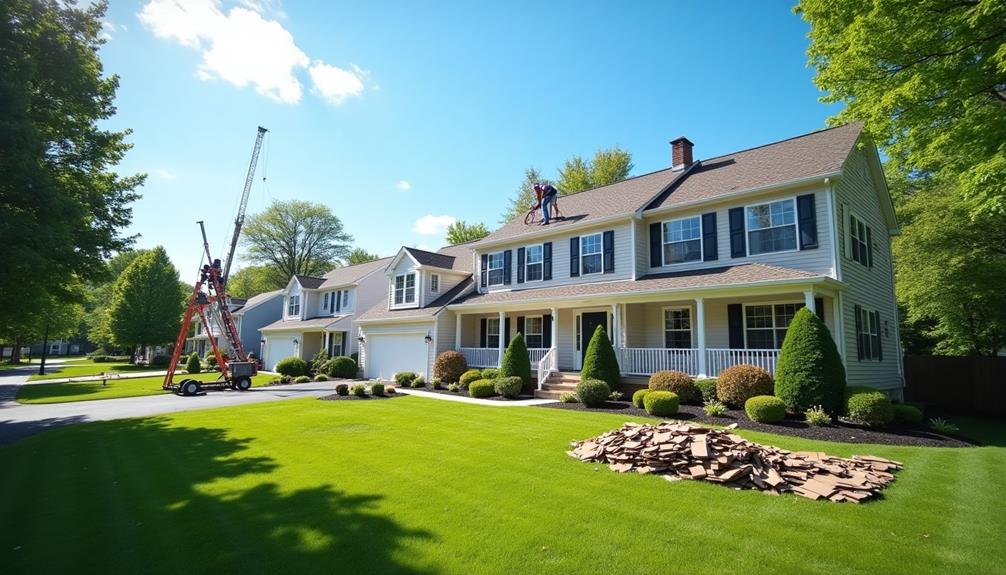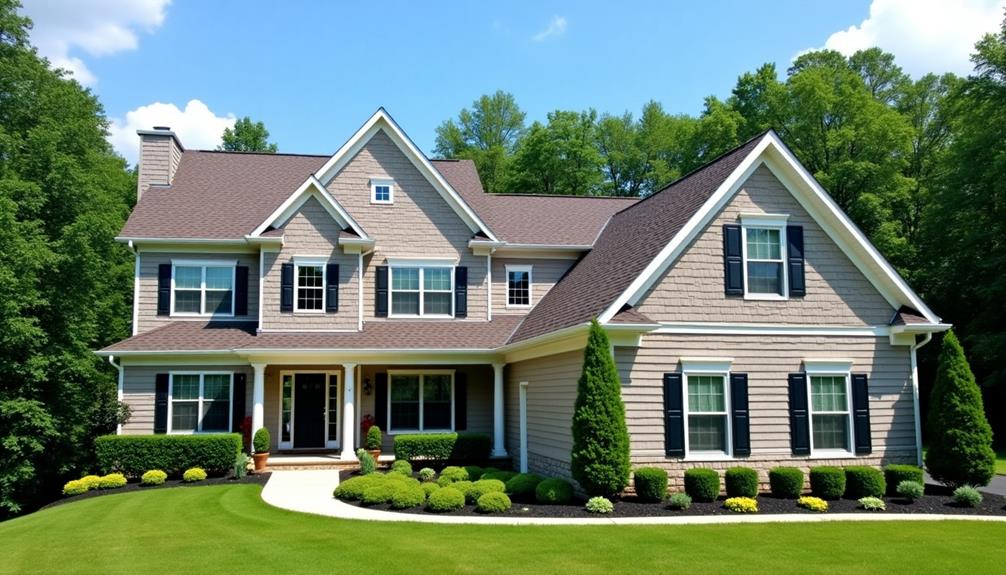If you're in Milford, NJ, and notice water stains or missing shingles, it's time to consider roof replacement. A new roof enhances your home's value, improves energy efficiency, and significantly increases safety by preventing leaks and structural damage. Choose materials that suit your climate and budget, such as durable metal roofing or long-lasting tile. The replacement process begins with a thorough inspection and estimates from reputable contractors. Ensuring your contractor is licensed and insured is crucial. By addressing these aspects, you'll secure a reliable roof for years to come, and there's more to explore about the entire process.
Signs You Need a Roof Replacement
When it comes to your roof, ignoring warning signs can lead to costly repairs down the line. One of the first indicators that you might need a roof replacement is the age of your roof. Most roofing materials have a lifespan of 20 to 30 years. If your roof is nearing this age, it's wise to start monitoring its condition closely.
Leak detection is another critical factor. Look for water stains on your ceilings or walls, as these could signal that your roof is failing. Regular inspections can help you catch these leaks early, but if you notice persistent moisture or mold growth, your roof may need urgent attention.
Additionally, check for missing or damaged shingles. If you see granules in your gutters, that's a sign your shingles are deteriorating, and replacement might be necessary. Curling or buckling shingles also indicate that your roof isn't performing optimally.
Benefits of Roof Replacement
Replacing your roof can deliver significant benefits that extend beyond just aesthetics
Choosing the Right Materials
Selecting the right materials for your roof is crucial to ensuring durability, performance, and aesthetic appeal. You'll want to consider factors like material durability and energy efficiency to make an informed decision. Here's a quick comparison of popular roofing materials:
| Material | Durability | Energy Efficiency |
|---|---|---|
| Asphalt Shingles | Moderate (15-30 years) | Moderate |
| Metal Roofing | High (40-70 years) | High (reflects heat) |
| Tile | High (50+ years) | Moderate (insulating) |
| Slate | Very High (75+ years) | Low (heavier, less reflective) |
As you evaluate your options, think about your climate and budget. For instance, metal roofing offers superior material durability and can significantly reduce your energy bills by reflecting sunlight. On the other hand, tile and slate may provide longevity but can be heavier and more costly. Ultimately, it's important to choose a material that not only enhances your home's appearance but also fits your long-term needs. By investing in the right roofing materials, you'll ensure that your roof withstands the test of time while maximizing energy efficiency.
The Roof Replacement Process
Navigating the roof replacement process can seem daunting, but understanding each step eases the transition. First, you'll want to schedule a thorough roof inspection with a qualified professional. This crucial step identifies any underlying issues and helps you determine the extent of the replacement needed. The inspector will assess the roof's condition, looking for damage, leaks, or structural concerns.
Once the inspection's complete, you'll receive a detailed report that outlines the necessary repairs and replacement options. From there, you can move on to cost estimation. This involves gathering quotes from reputable contractors based on the findings from the inspection. It's essential to compare these estimates, not just for price but also for the quality of materials and labor included.
After settling on a contractor, you'll discuss the timeline and any permits required. Preparation is key; ensure your property is ready for the project by clearing the area around your home.
Understanding this process not only helps you feel more in control but also ensures you make informed decisions, ultimately leading to a successful roof replacement that safeguards your home for years to come.
Hiring a Local Contractor
After you've gathered estimates and settled on a roof replacement plan, the next vital step is hiring a local contractor. Choosing a contractor with the right qualifications is essential for ensuring your project runs smoothly and meets your expectations.
Look for licensed professionals who've experience specifically with roof replacements. Verify their credentials and ask about their insurance coverage to protect yourself from potential liabilities.
Local reviews can provide invaluable insight into a contractor's reputation. Check online platforms and local community boards for feedback from previous clients. Pay attention to comments about workmanship, timeliness, and customer service. This will help you gauge whether they can deliver on their promises.
Once you've narrowed down your options, schedule consultations with potential candidates. Discuss your project in detail and ask for a timeline and warranty information. A reputable contractor should be transparent about costs and provide a detailed written estimate.
Ultimately, hiring a local contractor with strong qualifications and positive local reviews increases your chances of a successful roof replacement. Trust your instincts and choose someone you feel comfortable working with to ensure the best results for your home.

